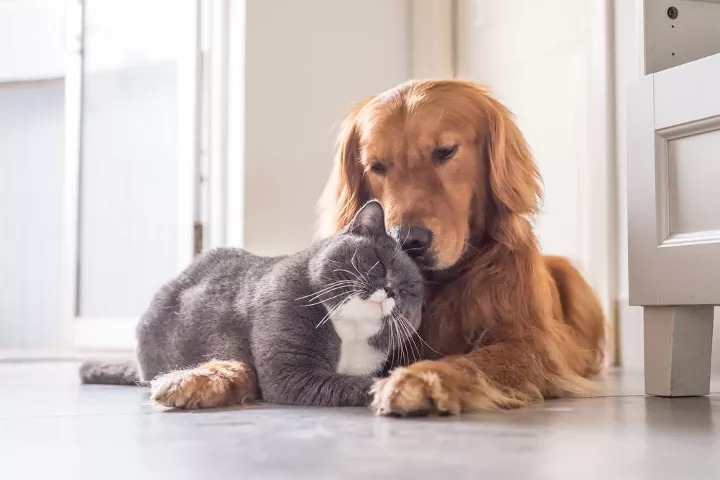What Do Dogs and Cats Have in Common? An In-Depth Look at Our Favorite Pets
When considering the beloved pets that grace millions of homes worldwide, dogs and cats undoubtedly top the list. But what do dogs and cats have in common? These two animals, though vastly different in behavior, appearance, and origins, share many fascinating similarities that make them both wonderful companions. Understanding what they have in common can deepen our appreciation for these incredible animals and enhance the bond we share with our furry friends.
Shared Traits of Dogs and Cats: The Heart of Our Favorite Pets
Evolutionary Roots and Domestication
One of the most intriguing aspects of what dogs and cats have in common is their history of domestication. Both animals have undergone thousands of years of evolution alongside humans, adapting to living in human environments and developing traits that make them excellent pets.
Dogs (Canis lupus familiaris), descended from wolves, were domesticated around 15,000 years ago. Their ability to work with humans—as herders, hunters, and protectors—made them invaluable members of early communities. Over generations, dogs have been selectively bred for various purposes, leading to hundreds of different breeds, each with unique traits but still maintaining their fundamental wolf-like lineage.
Cats (Felis catus), on the other hand, have a more recent history of domestication, estimated to have begun around 9,000 years ago in the Near East. Originating from African wildcats, cats became valued for their natural ability to control pests such as rodents. The bond between humans and cats grew over centuries because of their mutual benefits—cats kept granaries free of vermin, and in turn, humans provided food and shelter.
Both animals have origins deeply rooted in wild ancestors, and their domestication processes have shaped much of their current behavior and physiology.
Social Nature and Communication
Contrary to popular stereotypes, both dogs and cats are highly social animals. While their social behaviors differ, their need for interaction and communication is a key trait they share.
Dogs are pack animals by nature. They thrive on social bonds, hierarchy, and clear communication within their groups. Their ability to understand human gestures, such as pointing or verbal commands, is remarkable and stems from their evolution as cooperative species. They use a variety of vocalizations, body language, and facial expressions to communicate with humans and other animals.
Cats, although often perceived as solitary, are also social creatures—especially domestic cats. They communicate through a complex system of vocalizations, body language, and scent marking. Purring, meowing, and tail movements are all part of their communication repertoire. Interestingly, cats tend to form social groups when resources are abundant, and their social interactions can be just as nuanced as dogs’.
Emotional Connection and Loyalty
What do dogs and cats have in common in terms of emotional bonds? Both animals are capable of forming strong, affectionate relationships with humans.
Dogs are known for their loyalty and often display a clear attachment to their owners. They seek companionship, show excitement upon reunion, and can even sense their owner’s emotions. Their innate desire to please makes them highly trainable and eager to form close bonds.
Cats might not show their affection as overtly as dogs, but they also form meaningful attachments. Many cats will follow their owners from room to room, purr when petted, and display trust through behaviors like kneading or nuzzling. Their independence does not mean they are less loving; it simply manifests differently.
Sensory Capabilities
Another commonality lies in their remarkable sensory abilities. Both dogs and cats have evolved highly developed senses that help them navigate their environment, hunt, and communicate.
Hearing: Dogs and cats have excellent hearing capabilities, with sensitivity to high-frequency sounds beyond human perception. This trait helps them detect prey or potential threats. The sense of smell is profoundly developed in both animals.
Vision: Both animals have superior night vision compared to humans, thanks to special eye structures like the tapetum lucidum, which enhances low-light visibility.
Grooming and Hygiene
Despite their different grooming behaviors—dogs often require baths and brushing, whereas cats diligently groom themselves—both animals emphasize cleanliness. Grooming is not just about hygiene; it also plays a role in social bonding and stress relief. Both species use grooming to communicate, show affection, and establish social hierarchy.
What Do Dogs and Cats Have in Common in Behavior and Daily Life?
Play and Exercise
Engage a dog with fetch, tug-of-war, or agility activities; they thrive on active, interactive play, which also strengthens their bond with owners.
Cats, too, adore chasing after toys, pouncing, and stalking. Playing with a laser pointer, feather wand, or small balls helps keep cats stimulated and healthy, preventing boredom and destructive behaviors.
Diet and Nutritional Needs
While their dietary requirements differ—dogs are omnivores, and cats are obligate carnivores—they both need a balanced diet tailored to their physiology. High-quality pet foods, appropriate portion sizes, and regular feeding schedules support their health, growth, and vitality.
Love for Routine and Comfort
Both animals flourish on routine. Consistent feeding times, daily interaction, and a stable environment help reduce stress and improve their overall well-being. Providing cozy beds, designated resting spots, and familiar surroundings contribute significantly to their happiness.
Health and Veterinary Care
Dogs and cats both require regular veterinary checkups, vaccinations, and preventive care. Common health issues such as dental problems, parasites, and obesity are concerns for both species. Responsible pet ownership involves yearly exams, dental care, and prompt attention to health changes.
How Do Dogs and Cats Differ in Their Common Traits?
While examining what do dogs and cats have in common, it’s also essential to recognize their differences—these nuances make each species unique.
- Dependent behaviors:Dogs tend to be more dependent on their owners, seeking constant companionship, while cats are more independent and can entertain themselves.
- Training and obedience:Dogs are generally easier to train thanks to their eagerness to please, whereas cats require different training methods and are more autonomous. Cats use meowing, purring, and subtle gestures.
- Activity levels:Dogs usually need more exercise and outdoor time, while cats are more adaptable to indoor environments.
Despite these differences, their shared traits—social nature, ability to form bonds, sensory acuity—highlight why both animals are cherished members of our families.
Additional Insights into What Dogs and Cats Have in Common
Their Impact on Human Health and Well-being
Beyond physical traits and behaviors, what do dogs and cats have in common? They provide immense psychological and emotional benefits to humans. Numerous studies have shown that pet ownership can reduce stress, alleviate depression, lower blood pressure, and promote overall mental well-being.Their presence can diminish feelings of loneliness and provide support during difficult times.
Physical Activity: Dogs, in particular, encourage owners to walk and stay active. Daily walks with a dog help improve cardiovascular health and keep both pet and owner healthy.
Therapeutic Roles: Both animals are increasingly used in therapy settings—dogs for emotional support, and cats for calming environments in hospitals or nursing homes.
Their Common Cognitive Traits
Both dogs and cats exhibit problem-solving skills and cognitive abilities that enable them to adapt to various environments. They learn routines, solve simple puzzles (like figuring out how to access toys or treats), and display curiosity that keeps them engaged mentally.
Their Social Learning Capabilities
Both animals can learn from their surroundings and imitate behaviors. Dogs often learn commands through training, reacting to cues with impressive consistency. Cats, though more independent, can also learn routines, respond to voice commands, or recognize familiar sounds—and even mimic certain behaviors.
Their Role in Different Cultures
Across societies and history, both animals have held significant cultural roles. Dogs are often seen as guardians, loyal companions, and even symbol of fidelity. Cats are associated with mystery, independence, and sometimes spiritual protection, especially in cultures like ancient Egypt. This deep-rooted symbolism underscores their shared importance in human history.
Conclusion: The Unbreakable Bond—What Do Dogs and Cats Have in Common?
In summary, what do dogs and cats have in common? From their evolutionary roots to their social behaviors, their ability to communicate, and their capacity to form deep bonds with humans, these animals share more than what meets the eye. Their common traits illustrate the fundamental qualities that make them extraordinary companions—traits like loyalty, adaptability, intelligence, and a love for routine and comfort.
Whether you’re a dog lover or a cat enthusiast, knowing these similarities enriches our understanding and appreciation of these furry friends. Ultimately, both dogs and cats remind us of the beauty of companionship, the importance of patience and care, and the joy that animals bring into our lives every day.
Their shared traits foster a powerful connection, exemplifying that despite differences in appearance or behavior, dogs and cats fundamentally enrich our lives with their love, loyalty, and unique personalities. These marvelous creatures have carved out an irreplaceable space in our hearts and homes, continually demonstrating that what they have in common is far greater than what sets them apart.




